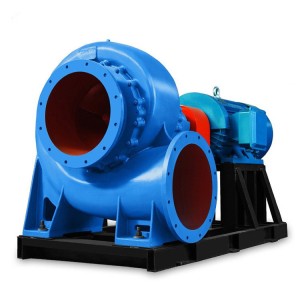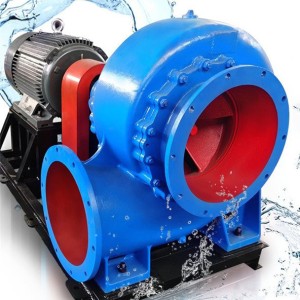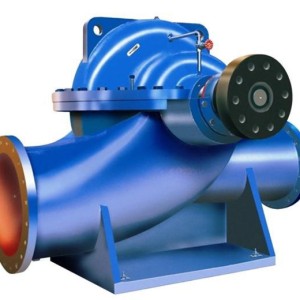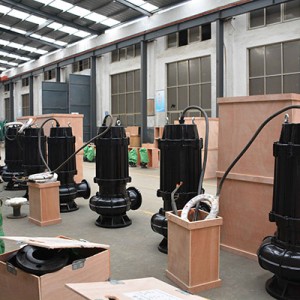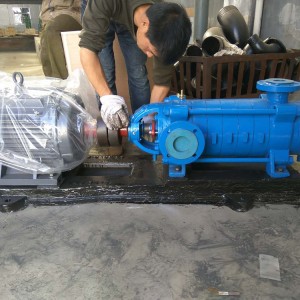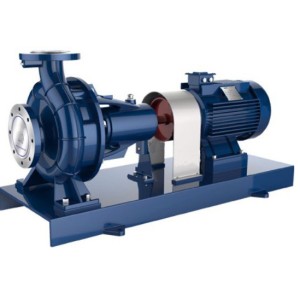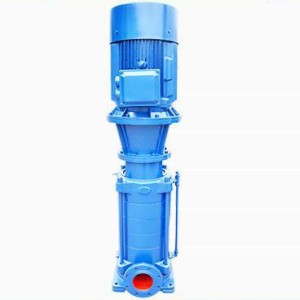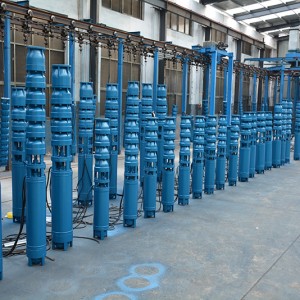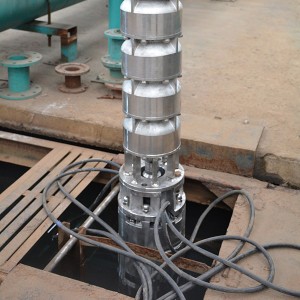1. The principle of pump selection
1. Make the type and performance of the selected pump meet the requirements of the device flow, head, pressure, temperature, cavitation flow, suction and other process parameters.
2. Must meet the requirements of media characteristics.
For pumps that transport flammable, explosive, toxic, or precious media, reliable shaft seals or leak-free pumps, such as magnetic drive pumps, diaphragm pumps, and canned pumps, are required
For pumps that transport corrosive media, the convection parts are required to use corrosion-resistant materials, such as AFB stainless steel corrosion-resistant pumps, CQF engineering plastics magnetic drive pumps
For pumps that transport solid particles, the convection parts are required to be made of wear-resistant materials, and the shaft seal should be flushed with clean liquid when necessary.
3. High mechanical reliability, low noise and low vibration.
4. Economically, the total cost of equipment costs, operating costs, maintenance costs, and management costs should be taken into account as the lowest.
5. The centrifugal pump has the characteristics of high speed, small size, light weight, high efficiency, large flow, simple structure, no pulsation of infusion, stable performance, easy operation and convenient maintenance.
Therefore, in addition to the following conditions, centrifugal pumps should be used as much as possible:
When there is a metering requirement, choose a metering pump
High head requirements, small flow and no suitable small flow high head centrifugal pump can be used, reciprocating pump can be used, if the cavitation requirements are not high, vortex pump can also be used.
When the head is very low and the flow is large, an axial flow pump and a mixed flow pump can be used.
When the medium viscosity is large (greater than 650~1000mm2/s), consider using a rotor pump or a reciprocating pump (gear pump, screw pump)
When the air content of the medium is 75%, the flow rate is small and the viscosity is less than 37.4mm2/s, a vortex pump can be used.
For occasions with frequent start-up or inconvenient pumping, pumps with self-priming performance should be selected, such as self-priming centrifugal pumps, self-priming vortex pumps, and pneumatic (electric) diaphragm pumps.
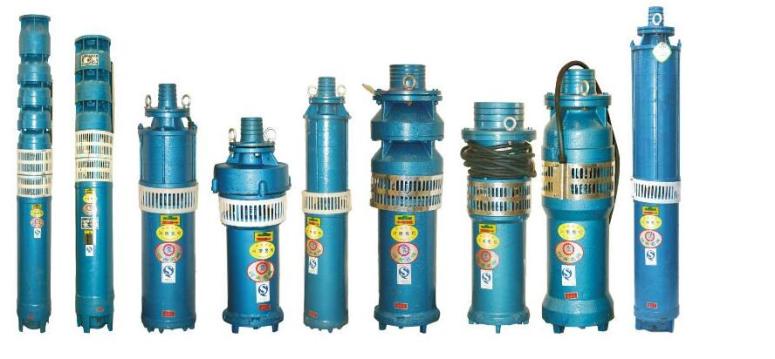
Second, the selection basis of the pump
The basis for pump selection should be considered from five aspects according to the process flow and water supply and drainage requirements, including liquid delivery volume, device head, liquid properties, piping layout and operating conditions, etc.
1. Flow rate is one of the important performance data of pump selection, it is directly related to the production capacity and conveying capacity of the entire device. For example, in the process design of the design institute, the normal, minimum and maximum flow rates of the pump can be calculated. When selecting the pump, take the maximum flow rate as the basis and take into account the normal flow rate. When there is no maximum flow rate, usually 1.1 times the normal flow rate can be taken as the maximum flow rate.
2. The head required by the installation system is another important performance data for pump selection. Generally, the head should be selected after magnifying 5%-10% of the margin.
3. Liquid properties, including the name of the liquid medium, physical properties, chemical properties and other properties. The physical properties include temperature c, density d, viscosity u, solid particle diameter and gas content in the medium, etc. This relates to the lift of the system, the effective gas Calculation of surplus and suitable pump type: chemical properties, mainly refer to the chemical corrosiveness and toxicity of the liquid medium, which is an important basis for the selection of pump materials and the selection of which type of shaft seal.
4. The piping layout conditions of the device system refer to the liquid delivery height and the liquid delivery distance from the liquid delivery direction, the lowest liquid level on the suction side, the highest liquid level on the discharge side, etc. Some data and piping specifications and their lengths, materials, pipe fitting specifications, and quantities Etc. in order to calculate the system head and check the cavitation margin.
5. There are many operating conditions, such as liquid operation T saturated steam power P, suction side pressure PS (absolute), discharge side container pressure PZ, altitude, ambient temperature, whether the operation is intermittent or continuous, and the pump position is fixed The ones are still removable.
The basic composition of a water pump: motor, coupling, pump head (body) and base (horizontal).
The main parameters of the water pump are: flow, expressed by Q, the unit is M3/H, L/S. Head, expressed by H, and the unit is M.
For clean water pumps, the required NPSH (M) parameter is very important, especially when it is used for suction water supply equipment.
For submersible pumps, the rated current parameter (A) is very important, especially when used in variable frequency water supply equipment.
The main parameters of the motor: motor power (KW), speed (r/min), rated voltage (V), rated current (A).
The pump power usually refers to the input power, that is, the power transmitted from the prime mover to the pump shaft, so it is also called shaft power, denoted by P.
The effective power is: the product of the pump’s head, mass flow and gravitational acceleration.
Pe=ρg QH (W) or Pe=γQH/1000 (KW)
ρ: Density of the liquid delivered by the pump (kg/m3)
γ: the gravity of the liquid delivered by the pump γ=ρg (N/ m3)
g: acceleration due to gravity (m/s)
Mass flow Qm=ρQ (t/h or kg/s)
What is the cavitation margin? What is the suction range? The respective units of measurement represent letters?
Answer: When the pump is working, the liquid will produce vapor at the inlet of the impeller due to a certain vacuum pressure. The vaporized bubbles will degrade the impeller and other metal surfaces under the impact movement of the liquid particles, thereby destroying the impeller and other metals. At this time, the vacuum The pressure is called the vaporization pressure, and the NPSH refers to the excess energy that exceeds the vaporization pressure per unit weight of the liquid at the pump suction port. The unit is marked in meters and (NPSH)r is used. The suction stroke is the necessary NPSH Δh: the vacuum degree of the pump allowed to suck liquid, that is, the allowable installation height of the pump, in meters.
Suction range = standard atmospheric pressure (10.33 meters)-cavitation margin-safety amount (0.5 meters)
The vacuum height of the standard atmospheric pressure energy pressure pipeline is 10.33 meters.
For example: a pump must have a NPSH of 4.0 meters, find the suction range Δh?
Solution: Δh=10.33-4.0-0.5=5.83 meters
What is the characteristic curve of the pump? It includes several aspects? What is its function?
Answer: The curve showing the relationship between the main performance parameters is usually called the performance curve or characteristic curve of the centrifugal pump. In essence, the performance curve of the centrifugal pump is the external manifestation of the law of liquid movement in the pump, which is obtained through actual measurement. The characteristic curves include: flow-head curve (QH), flow-efficiency curve (Q-η), flow-power curve (QN), flow-NPSH curve (Q-(NPSH)r), the function of the performance curve is For any flow point of the pump, a set of relative head, power, efficiency and NPSH values can be found on the curve. This set of parameters is called working state, referred to as working condition or working point, centrifugal pump The operating condition at the highest efficiency point is called the optimal operating point, and the optimal operating point is generally the design operating point. Generally, the rated parameters of centrifugal pumps are designed to coincide with or very close to the optimal operating point. It is very important to understand the performance parameters of the pump to run in the practical efficiency range, which saves energy and can ensure the normal operation of the pump.
General procedure for pump selection
1. According to various factors such as device layout, terrain conditions, water level conditions, operating conditions, comparison of economic schemes, etc.
2. Consider choosing horizontal, vertical and other types (pipe type, right angle type, variable angle type, corner type, parallel type, vertical type, vertical type, submersible type, convenient detachable type, submerged type, non-blocking type, Self-priming type, gear type, oil-filled type, water-filled temperature type). Horizontal pump: easy to disassemble and assemble, easy to manage, but large in size, more expensive, and requires a large area; vertical pump: in many cases the impeller is submerged in water, can be started at any time, and is convenient for automatic or remote control. And it is compact, small in installation area, and cheaper in price.
3. According to the nature of the liquid medium, determine the clean water pump, the hot water pump, the oil pump, the chemical pump, the corrosion-resistant pump or the impurity pump, or the non-blocking pump.
Pumps installed in explosive areas should use explosion-proof motors according to the level of the explosive area.
4. Vibration is divided into: pneumatic and electric (electric is divided into 220v voltage and 380v voltage).
5. According to the flow rate, choose single-suction pump or double-suction pump: According to the height of head, choose single-suction pump or multi-suction pump, high-speed pump or low-speed pump (air-conditioning pump), multi-stage pump has lower efficiency than single-stage pump. When both stage pumps and multi-stage pumps can be used, single-stage pumps should be used.
6. Determine the specific model of the pump. After selecting which series of pumps to use, the two main performance parameters of 5%-10% head after the margin can be enlarged according to the maximum flow rate on the type spectrum or series characteristic curve. Determine the specific model.
Using the pump characteristic curve, find the required flow value on the abscissa, and find the required head value on the ordinate, draw a vertical or horizontal line from the two values upwards and to the right respectively, and the intersection of the two lines just falls on the characteristic curve, then This pump is the pump to be selected, but this ideal situation is generally not rare, and the following situations are usually encountered:
A. The first type: the intersection point is above the characteristic curve, which means that the flow meets the requirements, but the head is not enough. At this time, if the head is similar, or the difference is about 5%, it can still be used. If the head difference is much, the larger head is selected. Pump. Or try to reduce the pipeline resistance loss.
B. The second type: the intersection point is below the characteristic curve and within the fan-shaped trapezoid range of the pump characteristic curve, this model is preliminarily determined, and then according to the difference in the head, it is decided whether to cut the impeller diameter. If the difference in the head is very small, no cutting If the head difference is large, cut the impeller diameter according to the required Q, H, ns and cutting formula. If the intersection does not fall within the range of the fan-shaped trapezoid, a pump with a smaller head should be selected.
When selecting a pump, sometimes it is necessary to consider the requirements of the production process and choose different shapes of Q-H characteristic curves.
7. After the pump model is determined, the physical and chemical medium of the water pump or the pump that transports the medium is similar to water. You need to go to the relevant product catalog or sample and make corrections according to the performance table or performance curve of the model to see whether the normal operating point falls within this Pump priority working area? Is the effective NPSH greater than (NPSH). Can the geometric installation height be modified by NPSH in reverse?
8. For liquid pumps with a viscosity greater than 20mm2/s, the characteristic curve of the water test pump must be converted into a performance curve of the viscosity, especially the suction performance must be carefully calculated or compared.
9. Determine the number of pumps and reserve rate:
Generally, only one pump is used for normal operation, because a large pump is equivalent to two small pumps working in parallel (referring to the same head and flow), and the efficiency of the large pump is higher than that of the small pump, so it is better to choose one from the perspective of energy saving. A large pump is used instead of two small pumps, but in the following situations, two pumps can be considered to cooperate in parallel:
The flow rate is so large that a pump cannot reach this flow rate.
For large pumps that need a 50% standby rate, two smaller pumps can be changed to work, and two standby pumps (three in total)
For some large pumps, pumps with 70% flow requirements can be used for parallel operation, instead of spare pumps. When one pump is overhauled, the other lift pump still bears 70% of the production.
For pumps that need to run continuously for 24 hours, three pumps should be backed up for operation, one for backup and one for maintenance.
Post time: 2021-12-14


